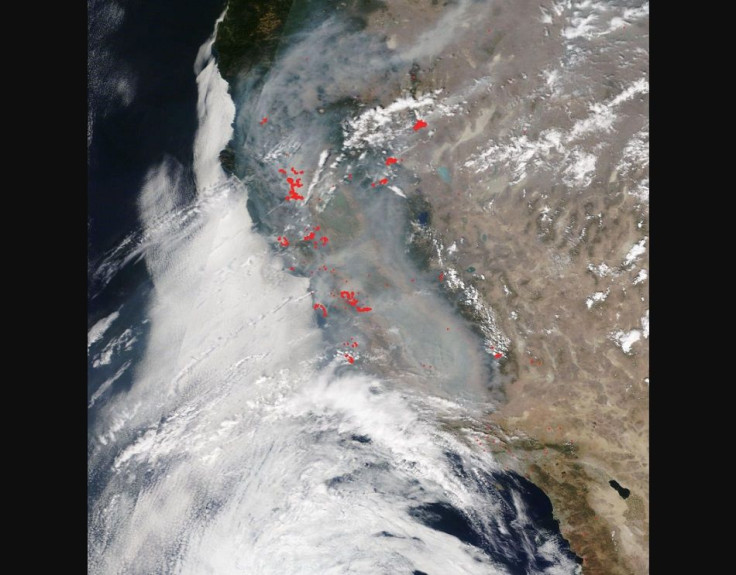Cooler Weather, Additional Crews Help Make Headway Against California's Raging Wildfires

KEY POINTS
- A marine layer carried cooler temperatures and higher humidity to some areas of the wildfires
- Additional crews have arrived from southern California to assist in battling the blazes
- Cal Fire said containment was up on all three fires since the cooler weather and reinforcements arrived
The California Department Forestry and Fire Protection fire crews managed to make some headway in containing wildfires across the state Wednesday. The National Weather Service credited this to cooler weather settling over northern parts of the state where the three fires are currently burning along with a fresh influx of crew from across the state.
“The return of the marine layer has been a welcomed one,” the NWS said in a press release.
A marine layer is an air mass that typically forms from the surface of a large body of water due to warm air masses meeting the cooler water surface. This results in cooler temperatures and higher humidity, both of which have helped sap some of the fires' strength in areas closer to sea level. Higher elevated areas hit by the fires have not benefited much, if it all, from the air mass.
Along with the marine layer, reinforcements arrived primarily from southern California to assist. Firefighter Tim Edwards said most of the crews were coming fresh off fighting blazes in southern areas of the state.
“Between the fires in Southern California and these, they’ve been going nonstop,” Edwards told the Associated Press. “Fatigue is really starting to set in, but they’re doing it.”
As for the fires themselves, the SCU Lightning Complex fire is now the largest of the three active wildfires. More than 365,000 acres have been burned, 37 structures have been destroyed or damaged, and five people injured. The fire is 25% contained.
Next is the LNU Lightning Complex fire, which has burned more than 357,000 acres. It has also been the most destructive of the three fires, with 1,234 structures damaged or destroyed, five people killed and four injured. Crews have managed to contain 33% of the blaze.
The CZU Lightning Complex fire is the smallest of the three with more than 79,000 acres burned. It has damaged or destroyed 486 structures and at least one person was killed. Crews have contained 19% of the fire.
© Copyright IBTimes 2025. All rights reserved.





















